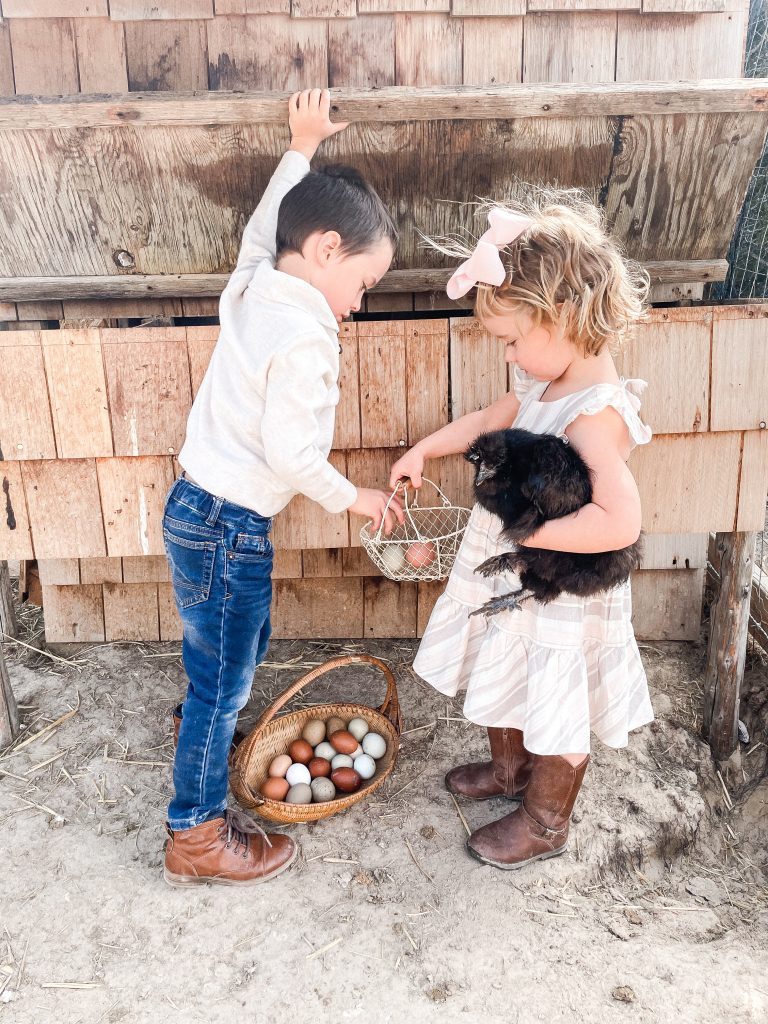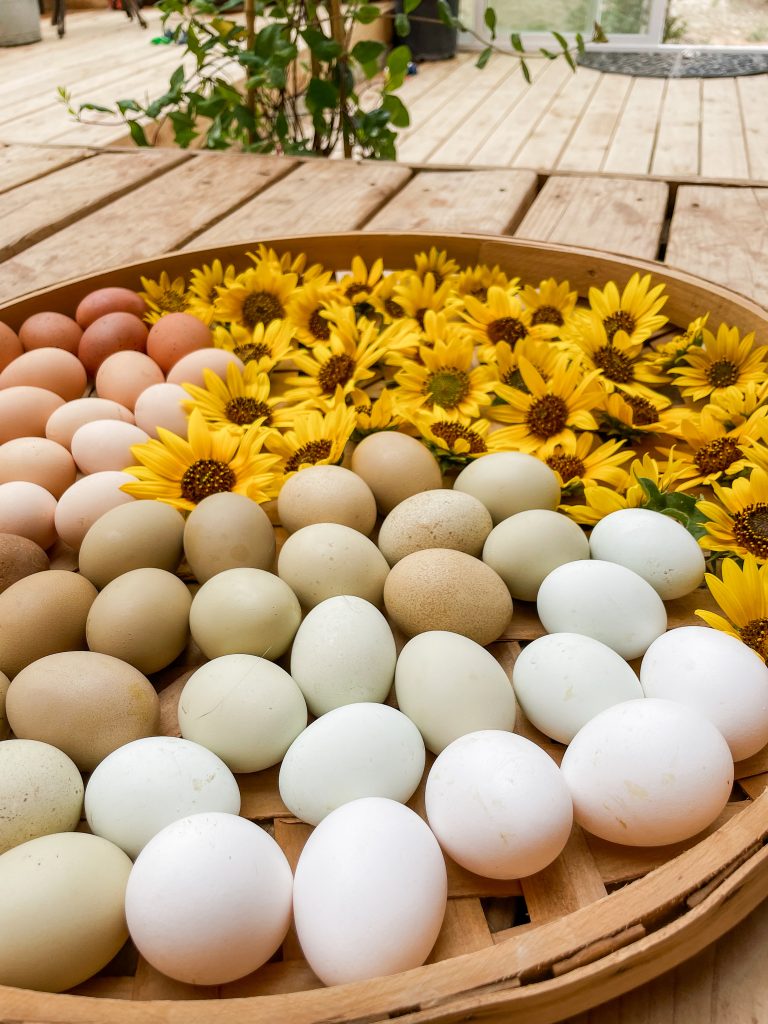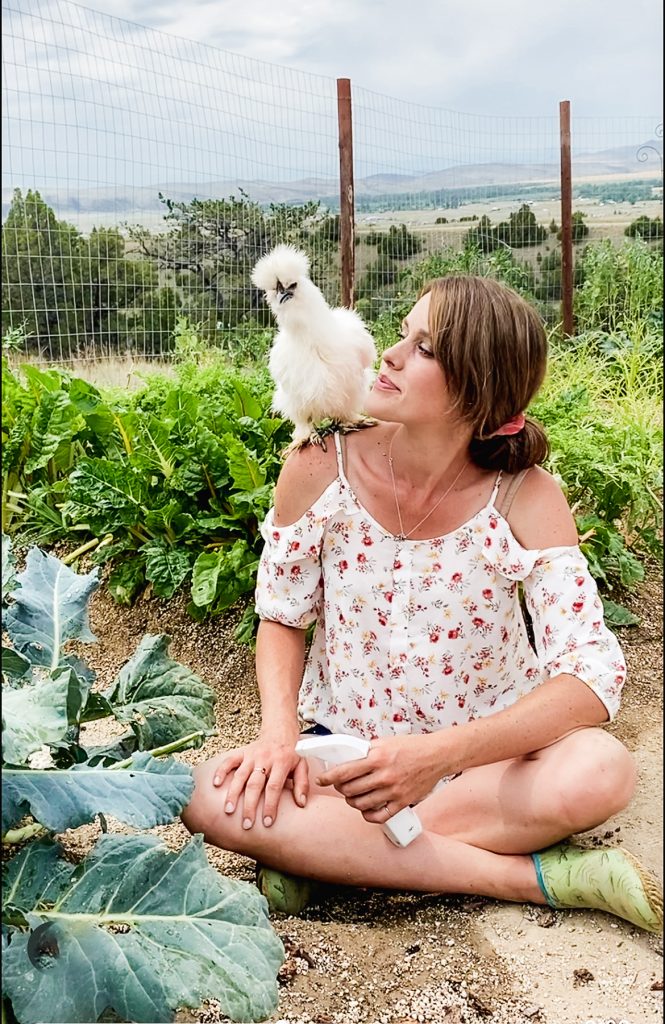
Chickens are the gateway drug of the homesteading world. You get chickens, and before you know it, you have ducks, turkeys, goats, a cow, are starting your seeds for a big garden, baking your first loaf of sourdough bread, and switching all your non-stick pans to cast iron! Do I think this is a bad thing? Absolutely not! Although, I would caution you to go slowly with the animals. We originally jumped in 1000% and reached a point of burnout. Now we know that our homesteading happy place is with chickens, our cow, and a garden. Our eggs, our dairy, and our veggies. Anything more than that is great in the summer, and not so great in the winter.
But chickens are for everyone, in my opinion. Even if I wasn’t eating eggs, I think I would still have chickens. I had no idea the amount of food waste we had until we started adding it to the chicken bucket under the sink. The chickens eat it and turn it into beautiful eggs every day.
I started getting really excited about chickens when I found out that they can lay a whole rainbow of colors of eggs! They aren’t all white or brown. And they can be really beautiful birds! They come in every color, with beards, and feathered cheeks, and feathered feet! There are mini chickens, or bantams. Silkies with the softest feathers, blue skin and an extra toe! The chicken world is slightly dangerous because it can be really fun, and chicken math is a real thing! You can end up with 30 of them before you know what happened! And that’s when it gets more expensive and coop cleaning gets more intense.

Hatching your own chicks is amazing! I love to get a dozen rainbow hatching eggs in the spring, pop them in the incubator, and 21 days later baby birds start pecking their way out into the world! I don’t think it will ever stop feeling like a miracle!
Whether you hatch your own or get your chicks from a hatchery or local feed store, they all go into a brooder for their first 6 weeks of life. Until they have their adult feathers, they can’t maintain their body temperature and need a good heat source, like a heat lamp. You can use an empty stock tank covered with a screen, a dog create, a large storage container, or build a beautiful brooder, but basically you need a safe container that they can’t jump out of as they get older.
List of Brooder Supplies
-Heat lamp
-Bedding (not cedar shavings as it can cause respiratory distress)
-Chick Starter Feed
-Feeder
-Waterer
-Electolyte/Probiotic (optional, but good to add to water for the first week or so)
-Chick Grit (little tiny rocks that are necessary for their digestive process)

You can buy chicks sexed as Pullets(girls) and Roosters(boys), or “straight run”(not sexed). Keep in mind, if you are buying straight run chicks that you probably only need one rooster, and only hens lay eggs. I know that sounds ridiculously obvious, but enough people have asked me questions that I thought were common knowledge, that I have learned to not take anything for granted.
Roosters crow. Hens lay eggs starting around 18 weeks of age. Hens will lay eggs even if there is no rooster present. But chicks can not hatch from eggs without a rooster present.
Adult chicken care is pretty basic. They need a coop that is weatherproof and the door to the coop needs to be closed at night because they are very vulnerable to predators. Chickens put themselves to bed when it gets dark, which is awesome. They need a place to roost, especially when it is cold, so they can tuck their feet up into their feathers. They need clean water and a good layer feed. We choose to feed an organic layer feed in addition to all of our kitchen scraps. The amount will depend on how many chickens you have, and the amount of kitchen scraps. If you have a garden, the chickens love all sorts of veggie tops and things you might not want to eat, and that also helps with feed costs. Chickens are happiest if they have some space to free range and can forage for bugs and plants!

Chickens are omnivorous and can eat most foods from the kitchen, with the exception of nightshades(peppers, eggplant, potato skins), onions, apple seeds, avocado skins, raw or dried beans, rhubarb and citrus. I also would not feed my chickens fast food or highly processed food.
Even with a modest backyard in a city, you could have a few chickens and some garden beds, and add some healthy, whole foods into your diet while contributing to your family’s food security.